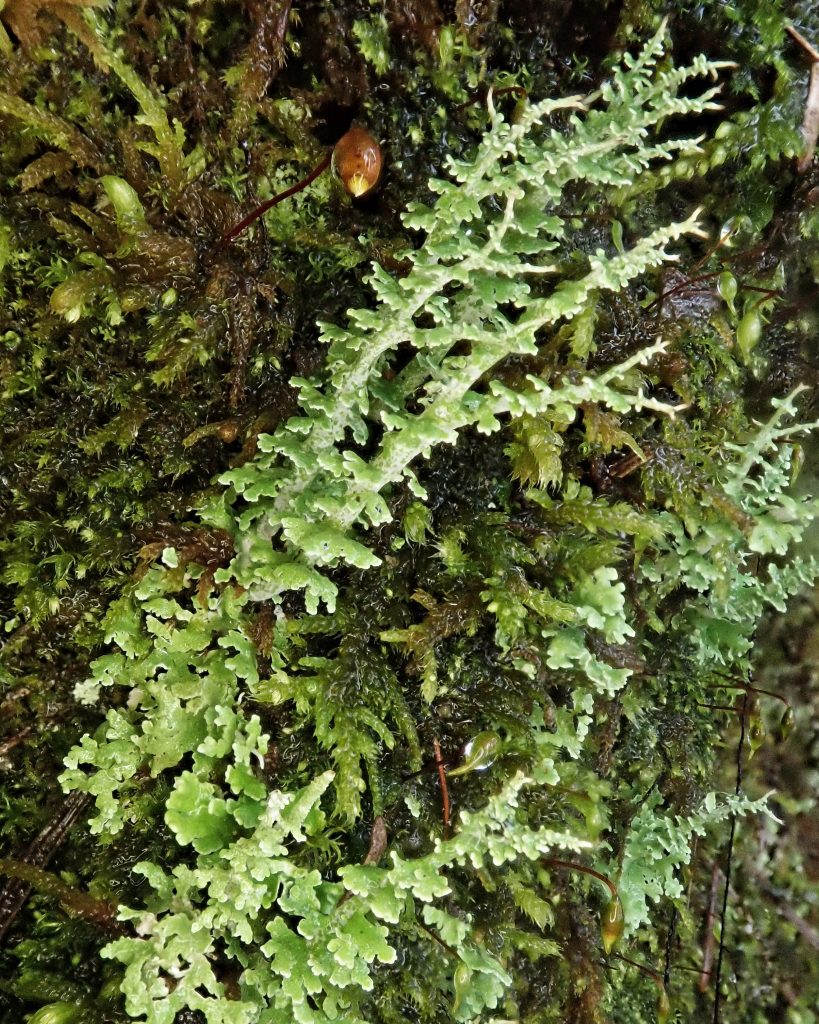
I had to find this lichen 3 times before getting a positive identification on it. The first time I found it I thought, because of the multiple branching, that it was a reindeer lichen, and naively assumed I could identify it from a photo. I was soon informed by my lichen group that reindeer lichens do not have squamulose podetia, and that I might have C. furcata, but that it couldn’t be ascertained for certain from photos alone. Well, not from my non-diagnostic photos.

The next time I found something that looked like this I remembered to grab a chunk. But I didn’t get around to looking at it very quickly, and it desiccated inside the small paper bag in which it was stored on my shelf, with the result that there were many cracks in the podetia, many of the squamules fell off, branches broke when I tried to remove entwined moss, and, given my inexperience, I couldn’t be certain about diagnostic traits.
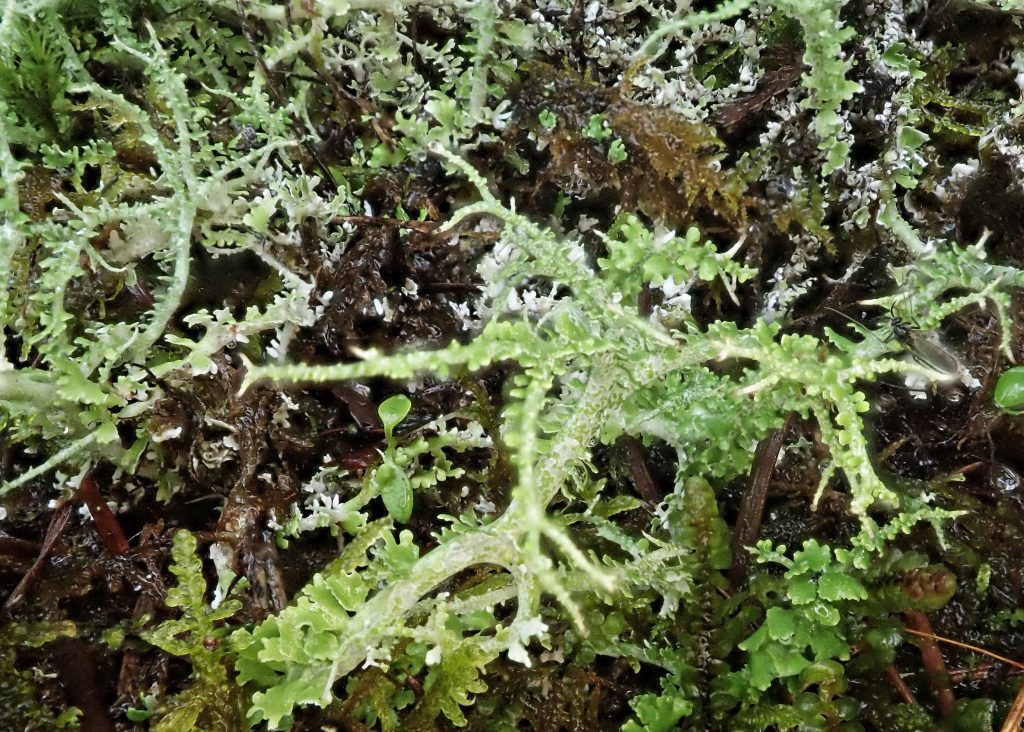
Finally, yesterday on a trip to The Cliff necessitated by another identification problem caused by my inexperience, lack of attention to details, and disorganization (which comedy of errors I’ll tell you about tomorrow), I snagged this specimen, and put it in a slightly damp plastic container, and refrigerated it as soon as I got home. Thus it was still very fresh when I got it under the ‘scope a few hours later, and it was fairly straightforward to run it through the key and determine that the cortex was patchy, it lacked soredia, and the leaf axils were perforated, convincing me it was Cladonia furcata, a fact which Bruce McCune kindly confirmed for me.
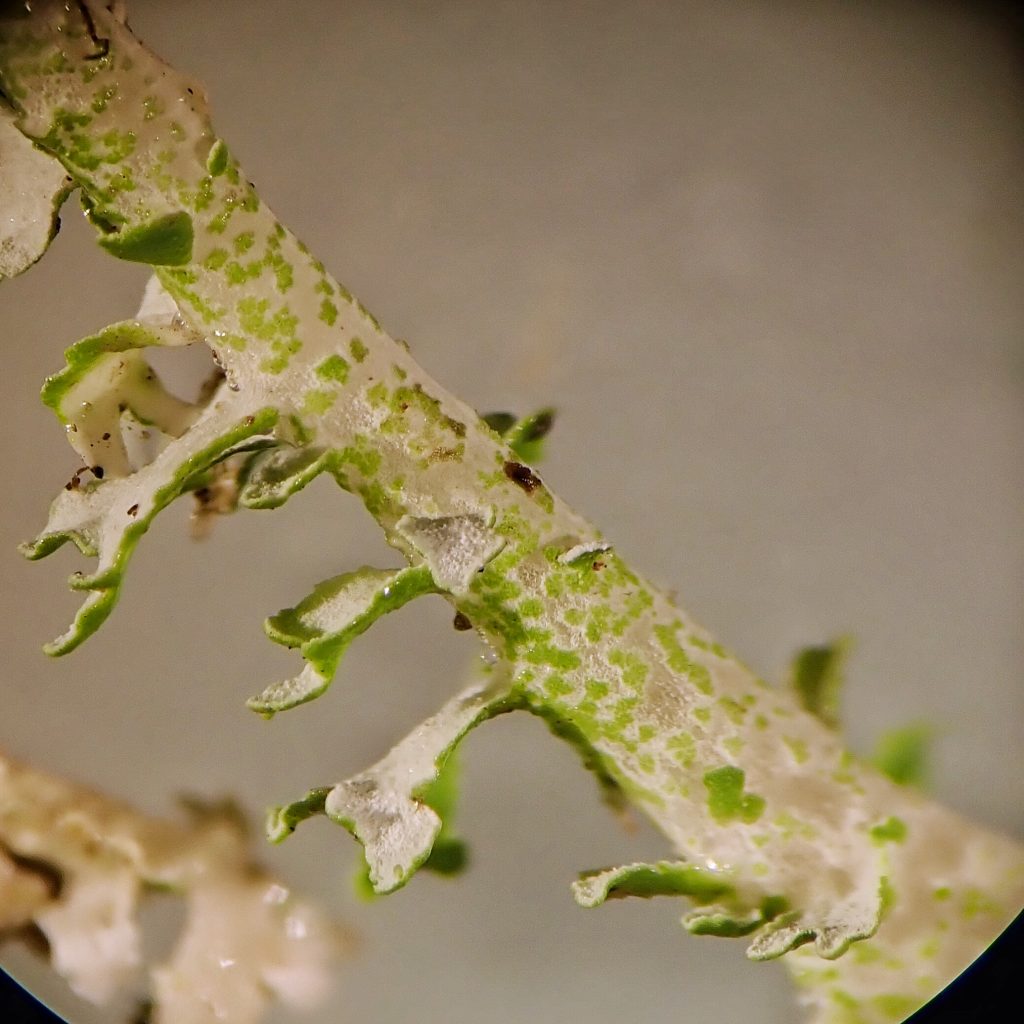
Having said all of that, it is highly possible that eventually what I am calling C. furcata will have a different scientific name. A recent study (Pino-Bodas et. al.; 2015) showed that only one of the lichens (C. stereoclada, which isn’t present in North America) in the C. furcata complex was monoplyletic, meaning that none of the others arose from a common lineage. And there is much morphological and chemotypical variation in Cladonia furcata itself, although there is reason to believe that much of that variation is environmentally dictated. There are still vast amounts to be learned about the concept of speciation in general, and lichens, with their symbiotic relationships, present a particular set of challenges. They will probably never tie a pretty little bow on this package.
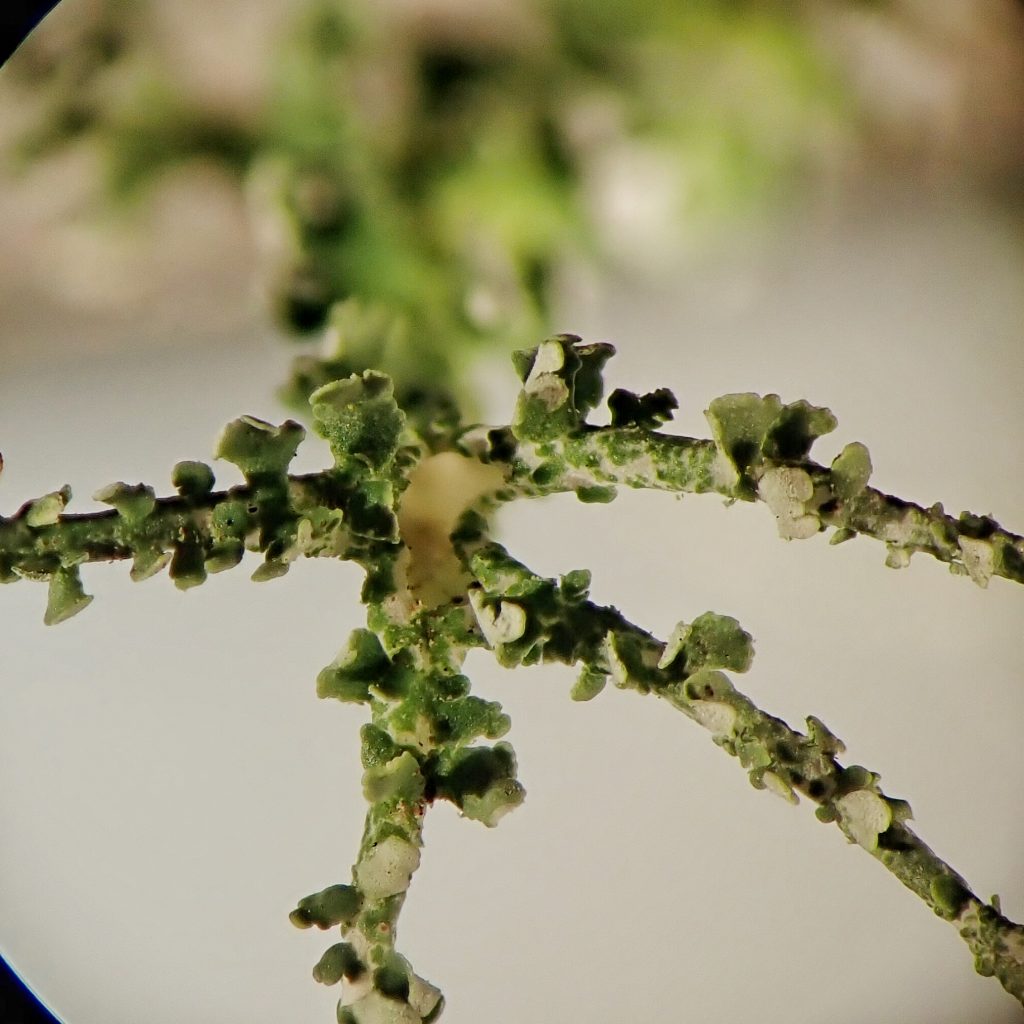
Description– Relatively tall (up to 5”), branching podetia, with abundant olive to brown squamules; usually lacks cups, but branch axils open to the interior; basal squamules usually disappear with age; lacks soredia, but the cortex breaks down into grainy patches; often forms intricate clumps.
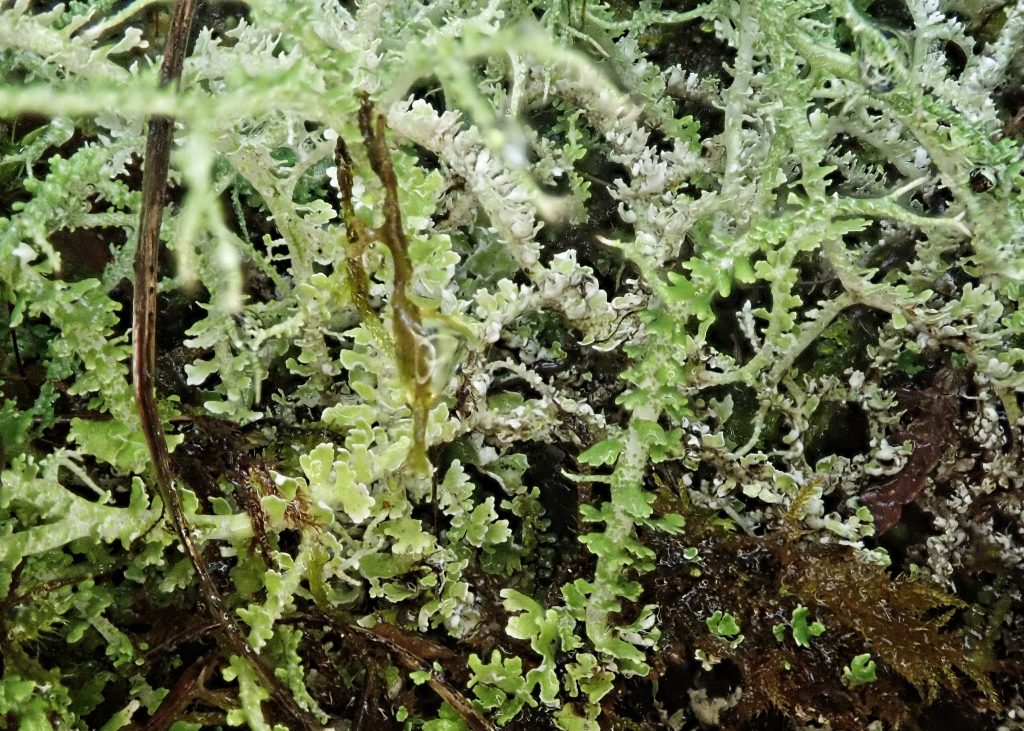
Similar species– Positive identification of Cladonia sp. requires extensive experience, or a key (like this one by McCune/Yang, which also has a great interactive glossary accessed by clicking on the characteristic in question) and magnification; C. squamosa is greyish green, usually unbranched, forms cups, and retains the basal squamules; C. multiformis is most common east of the Cascades, does not have perforated leaf axils but does form cups that are perforated; C. scabriuscula is uncommon and coastal, and has soredia at the tips; members of the reindeer lichen subgenus Cladina do not have squamulose podetia.
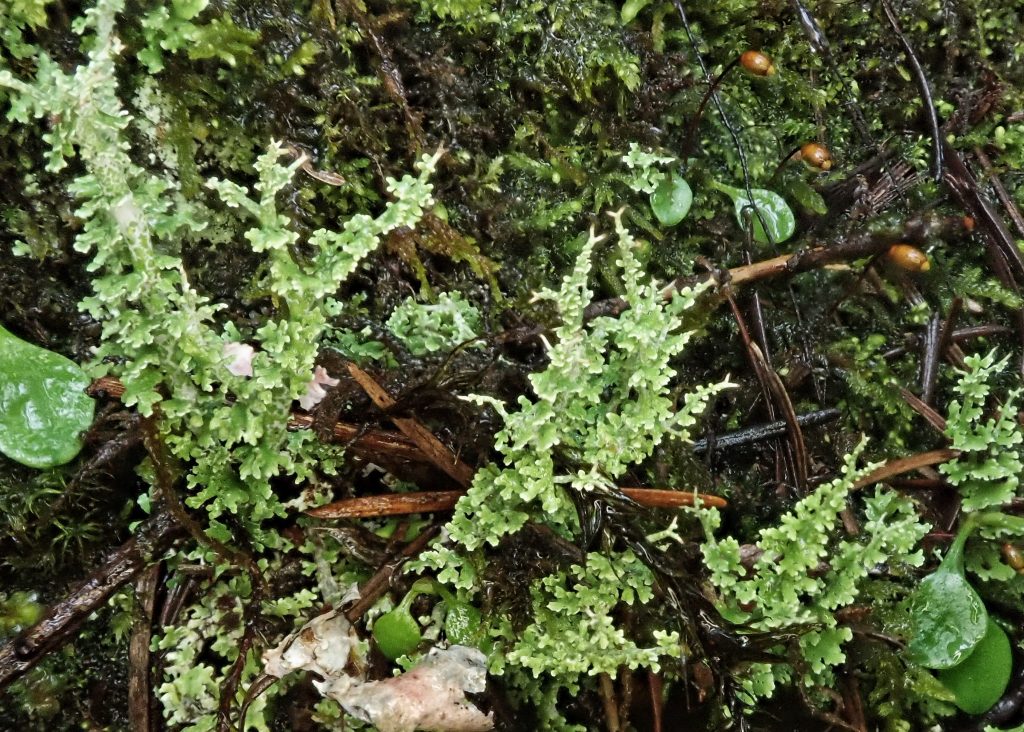
Habitat-On soil, humus, moss, moss over rock, rotting logs and tree bases in moist to mesic forests up to mid elevations; frequently found in shade alongside roads.
Range-Cosmopolitan; most common in our region west of the Cascades, and absent east of the eastern foothills of the Cascades.
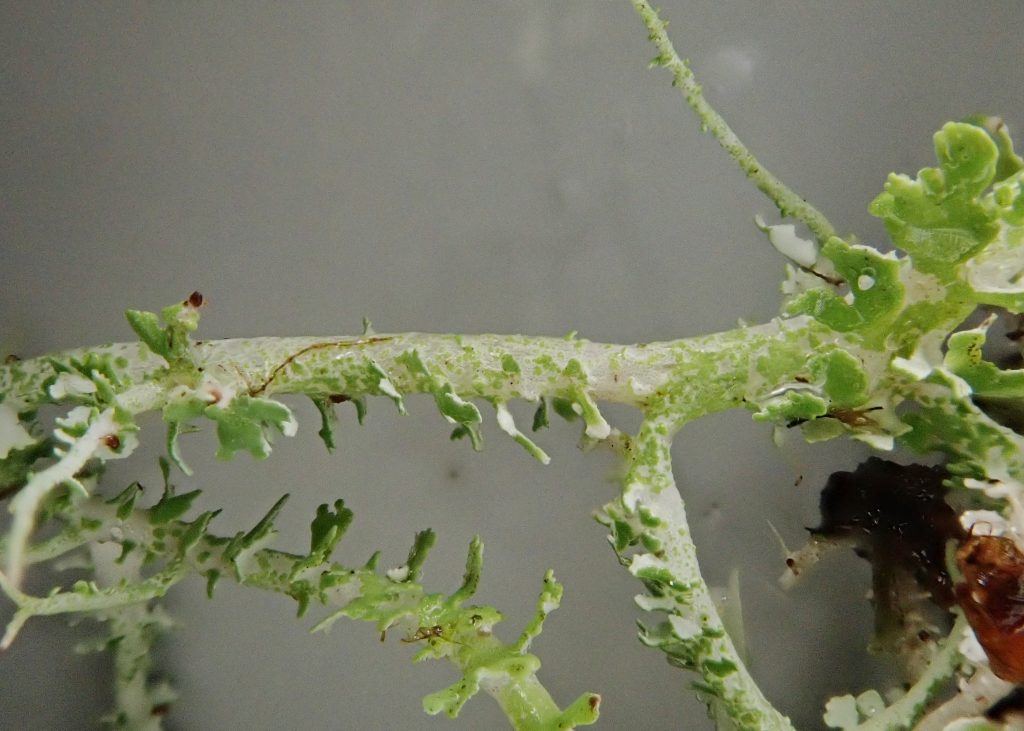
Eaten by– Like most Cladonia this lichen is sometimes grazed by hooved herbivores, and by gastropods. Some polysaccharides from C. furcata have been shown to possibly have therapeutic benefits in the treatment of leukemia and other cancers.
Etymology of names– Cladonia comes from the Greek and means ‘branched’, referring to the intricate branching of the type specimens of this genus, and certainly applicable to our present lichen. The specific epithet furcata is from the Latin for ‘fork’, and refers to the tendency of this lichen to branch dichotomously.
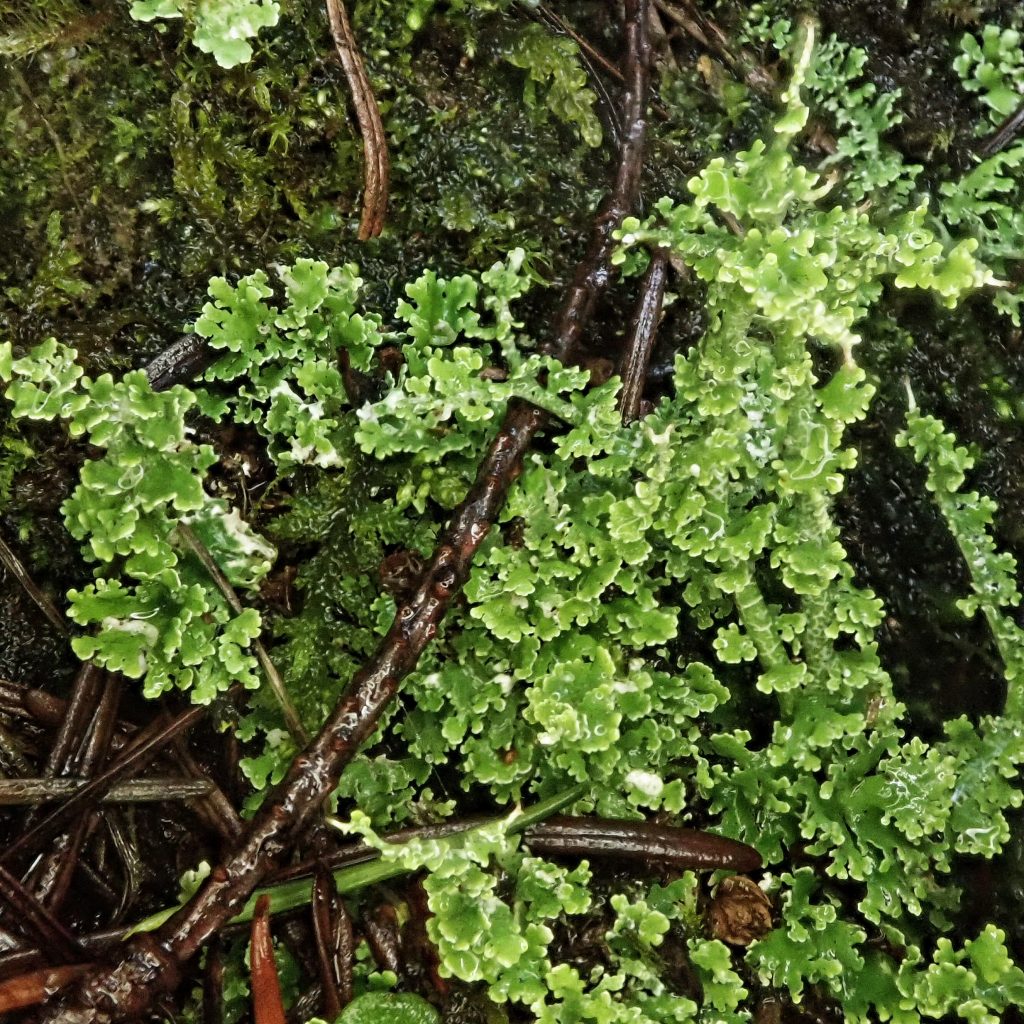
https://lichens.twinferntech.net/pnw/species/Cladonia_furcata.shtml
https://www.waysofenlichenment.net/lichens/Cladonia%20furcata
https://lichenportal.org/cnalh/taxa/index.php?taxon=53413&clid=1102
https://www.jungledragon.com/specie/4836/many-forked-cladonia.html
https://www.anbg.gov.au/lichen/case-studies/cladonia-furcata.html
https://en.m.wikipedia.org/wiki/Cladonia_furcata
Common Macrolichens of the Pacific Northwest
https://www.sciencedirect.com/science/article/abs/pii/S0304416503001314
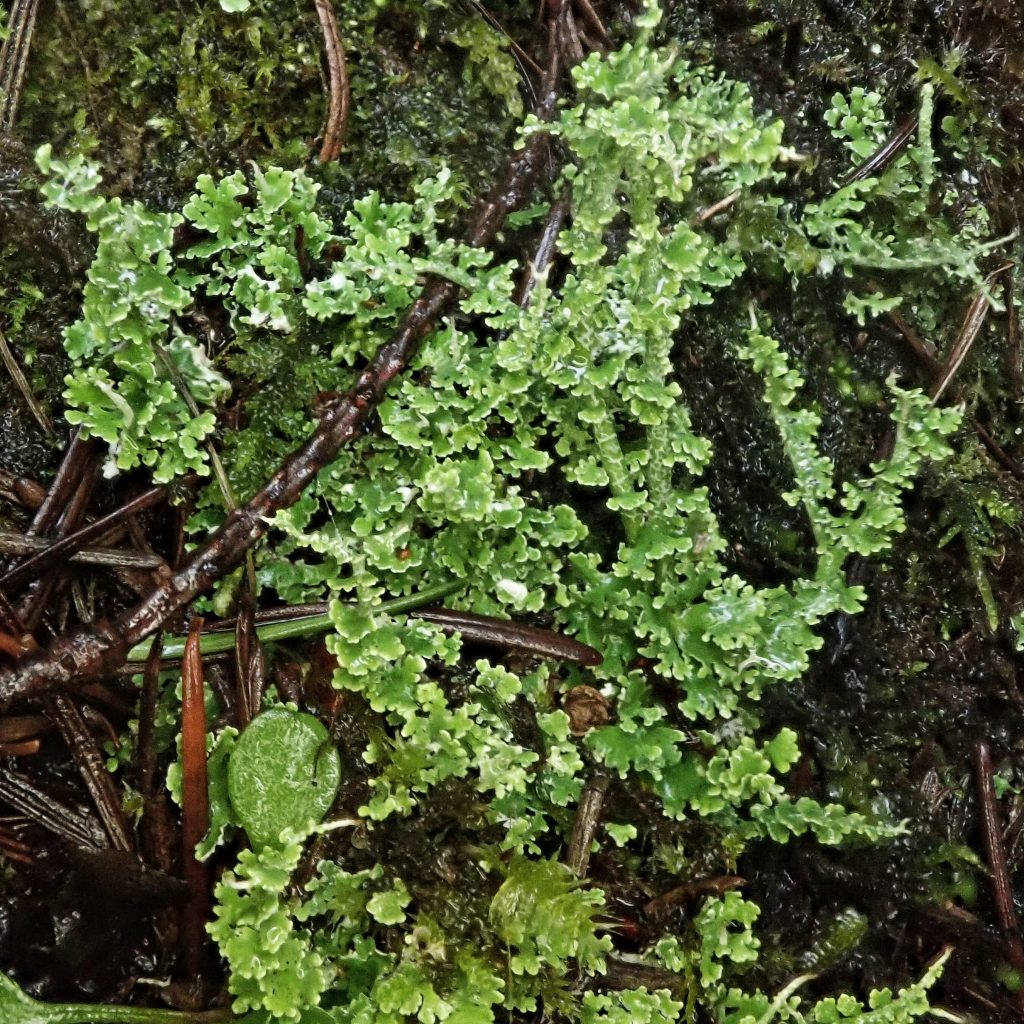
1 thought on “Cladonia furcata”